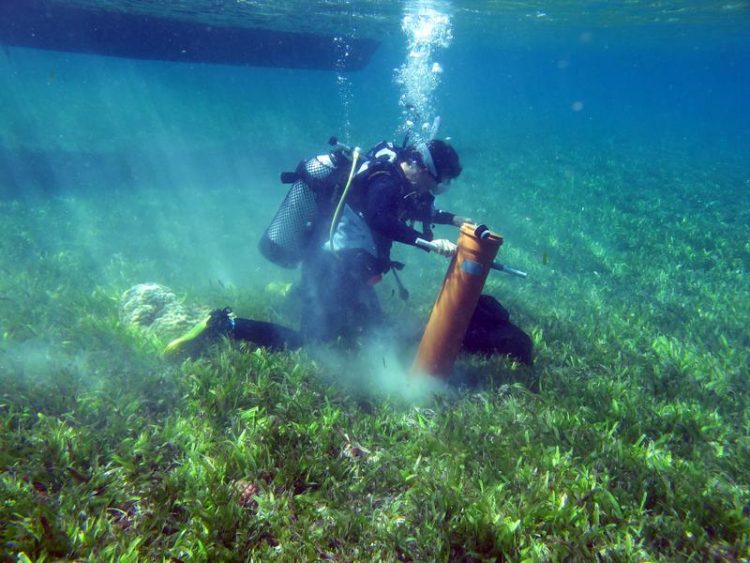DFG funds new research project on seagrass and macroalgae ecosystems in the tropics with €400,000

Researchers from the Leibniz Center for Tropical Marine Ecology (ZMT) taking samples in Zanzibar © Dieuwke Hoeijmakers, ZMT
In shallow water ecosystems tropical seagrasses and macroalgae are an important first link in the food chain and provide a number of significant services not only to the organisms living in these environments but also to humans and other connected ecosystems such as mangroves or coral reefs.
Aside from offering shoreline protection from erosion and storms, seagrasses and macroalgae provide habitat for many fish and invertebrates. They also play an important role in mitigating climate change. As so-called carbon sinks they take up CO2 and remove it from the atmosphere.
However, these coastal ecosystems are currently facing a significant threat from eutrophication caused by wastewater or residue from aquaculture as well as from urbanisation and deforestation which increases run-off of nutrients and sediments to the coastal zone.
“On a global scale seagrasses are lost at an estimated 7 % per year. These figures already date back seven years so the loss has most likely increased since then“ says project coordinator Dr. Teichberg.
The marine biologist is focusing her research on regions in the Indo-Pacific and the tropical Atlantic. “Although the tropics host the largest number of seagrass species there is not that much known about how these ecosystems function and how they will cope with anthropogenic impact and environmental changes,” she explains.
The first expedition in September will lead the researcher to Zanzibar (Tanzania) where she has already done some work on seagrass ecosystems as part of a previous project with the Institute of Marine Science. In the second year of the project the scientist will head to the Smithsonian Tropical Research Institute in Bocas del Toro, Panama to do further field studies and eventually be able to compare the seagrasses in two very different tropical regions.
“The first step is to examine the seagrass communities under varying environmental conditions at the sites and identify potential drivers of community change. In the second stage we will be linking the traits of the organisms and the communities to different environmental conditions.”
When investigating the traits of seagrasses and macroalgae Dr. Teichberg will be examining a series of different plant morphological characteristics such as leaf structure and size, physiological traits such as rates of growth, photosynthesis, nutrient and carbon uptake , and biochemical traits linked to light absorption and defense against grazing or disease. In the future there are also plans to use the generated data for a trait-based model to predict the impact of environmental change on these ecosystems.
Summing up her motivation behind the research Dr. Teichberg says: “Essentially, we are interested to find out how organisms function in their environment, to understand their role in the ecosystem, and how environmental change will impact them in the future.”
Media Contact
More Information:
http://www.zmt-bremen.deAll latest news from the category: Awards Funding
Newest articles

High-energy-density aqueous battery based on halogen multi-electron transfer
Traditional non-aqueous lithium-ion batteries have a high energy density, but their safety is compromised due to the flammable organic electrolytes they utilize. Aqueous batteries use water as the solvent for…

First-ever combined heart pump and pig kidney transplant
…gives new hope to patient with terminal illness. Surgeons at NYU Langone Health performed the first-ever combined mechanical heart pump and gene-edited pig kidney transplant surgery in a 54-year-old woman…

Biophysics: Testing how well biomarkers work
LMU researchers have developed a method to determine how reliably target proteins can be labeled using super-resolution fluorescence microscopy. Modern microscopy techniques make it possible to examine the inner workings…





















